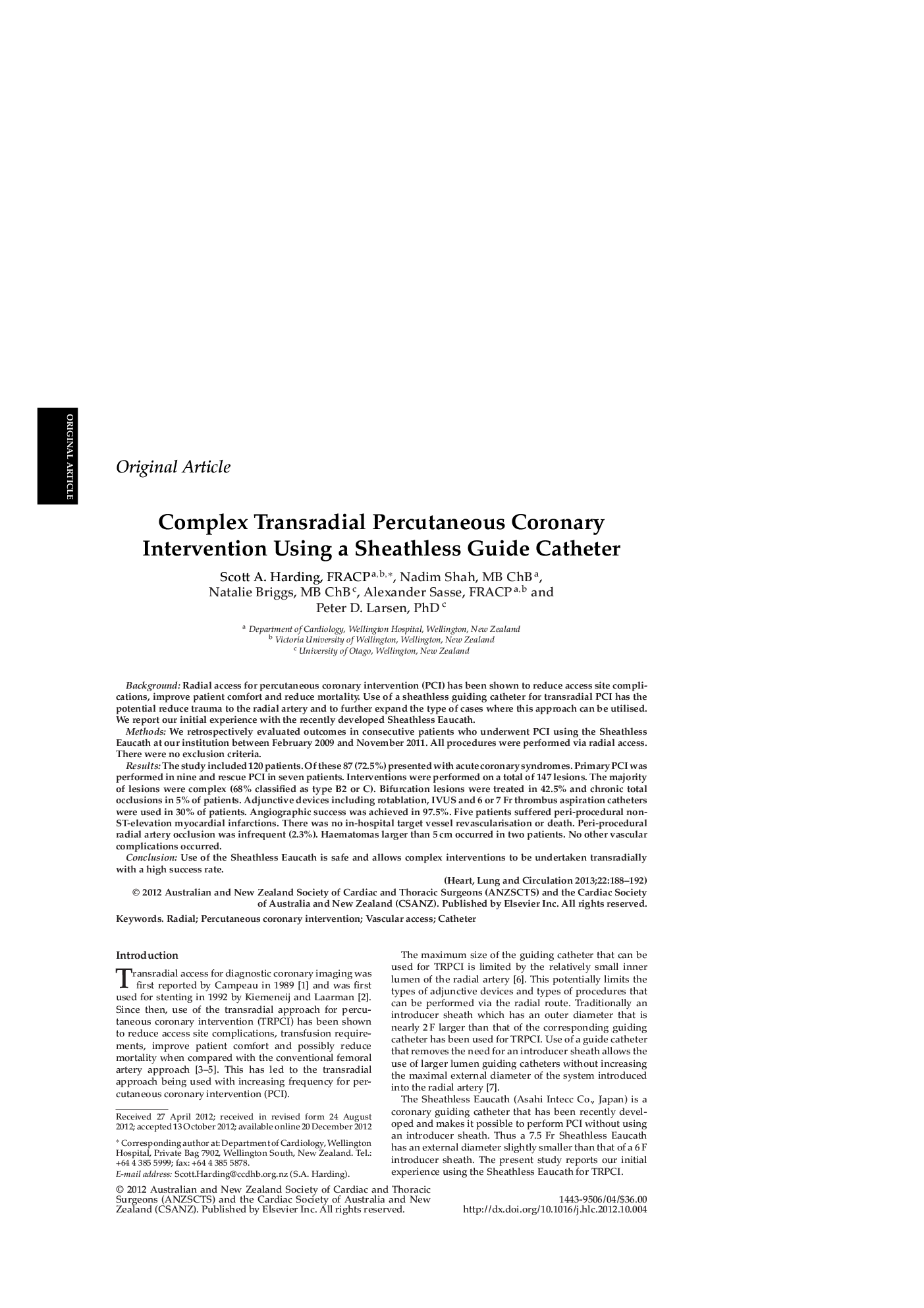| Article ID | Journal | Published Year | Pages | File Type |
|---|---|---|---|---|
| 2918114 | Heart, Lung and Circulation | 2013 | 5 Pages |
BackgroundRadial access for percutaneous coronary intervention (PCI) has been shown to reduce access site complications, improve patient comfort and reduce mortality. Use of a sheathless guiding catheter for transradial PCI has the potential reduce trauma to the radial artery and to further expand the type of cases where this approach can be utilised. We report our initial experience with the recently developed Sheathless Eaucath.MethodsWe retrospectively evaluated outcomes in consecutive patients who underwent PCI using the Sheathless Eaucath at our institution between February 2009 and November 2011. All procedures were performed via radial access. There were no exclusion criteria.ResultsThe study included 120 patients. Of these 87 (72.5%) presented with acute coronary syndromes. Primary PCI was performed in nine and rescue PCI in seven patients. Interventions were performed on a total of 147 lesions. The majority of lesions were complex (68% classified as type B2 or C). Bifurcation lesions were treated in 42.5% and chronic total occlusions in 5% of patients. Adjunctive devices including rotablation, IVUS and 6 or 7 Fr thrombus aspiration catheters were used in 30% of patients. Angiographic success was achieved in 97.5%. Five patients suffered peri-procedural non-ST-elevation myocardial infarctions. There was no in-hospital target vessel revascularisation or death. Peri-procedural radial artery occlusion was infrequent (2.3%). Haematomas larger than 5 cm occurred in two patients. No other vascular complications occurred.ConclusionUse of the Sheathless Eaucath is safe and allows complex interventions to be undertaken transradially with a high success rate.
